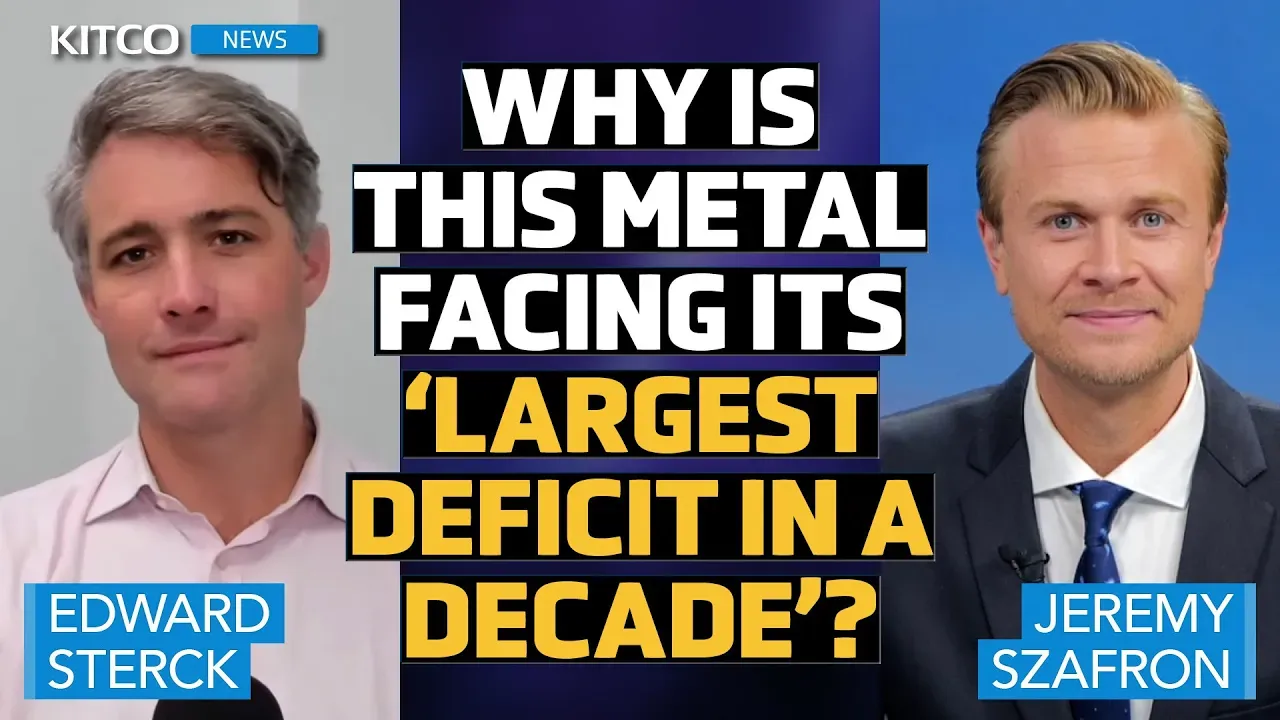The platinum market faces decade-high deficit but prices are yet to respond, here are the key triggers - Edward Sterck
The platinum market faces decade-high deficit but prices are yet to respond, here are the key triggers - Edward Sterck
By Jeremy Szafron
Published:
Updated:

(Kitco News) - The platinum market is facing its largest supply deficit in over a decade, driven by declining mining output, recycling challenges, and robust industrial demand, according to the latest report from the World Platinum Investment Council (WPIC). Despite this massive gap, prices have not reacted as many would expect, leaving investors questioning the factors behind this disconnect. At the time of writing, platinum prices are trading in the range of $952 to $962 per ounce, significantly below the year-to-date high of $1,094.50 reached in May 2024.
Recycling issues have significantly impacted supply, with about 25% of the annual platinum supply coming from recycled materials, predominantly from end-of-life vehicles. "There is a shortage of end-of-life vehicles, with people driving their existing cars for longer," said Edward Sterck, Director of Research at WPIC in a recent interview with Jeremy Szafron, Anchor at Kitco News. He added that lifestyle changes, such as remote work, have further contributed to fewer cars being recycled, straining the platinum supply.
China, the largest market for platinum, plays a crucial role in sustaining demand. "What goes on in China has a significant bearing on overall platinum demand," noted Sterck. Despite economic concerns, Chinese demand has remained stable, largely due to tightening emissions regulations that continue to bolster consumption. "Most of the end uses for platinum are relatively well protected against a Chinese economic slowdown. Tightening regulations help offset any potential weakness in vehicle production or sales."
Hybrid vehicles have also become a major driver of platinum demand. "Hybrid vehicles require more platinum per vehicle than traditional internal combustion engines because their engines are frequently turned on and off, leading to lower operating temperatures," Sterck explained. To meet emissions standards, these vehicles need more platinum in their catalytic converters.
The push towards electric vehicles (EVs) and hybrid electric vehicles (HEVs) has influenced platinum demand. While battery electric vehicles (BEVs) do not require platinum, hybrid vehicles—both plug-in hybrids (PHEVs) and full hybrids—are still heavily reliant on internal combustion engines, which use catalytic converters containing platinum. Industry data shows that hybrid vehicle sales have increased significantly, with many consumers opting for hybrids as a transitional technology before committing to fully electric vehicles. This trend has contributed to higher platinum usage, especially as hybrid vehicles generally require 10-15% more platinum per catalytic converter compared to traditional combustion engines.
"These deficits, coupled with the depletion of above-ground stocks, are likely to be reflected in investor sentiment eventually," concluded Sterck. As the platinum market continues to face supply constraints and shifting industrial demand, a price adjustment may be inevitable.
For more insights and in-depth analysis including his outlook for 2025 and more on the supply crunch, watch the full interview with Edward Sterck above.
Read the full article at: The platinum market faces decade-high deficit but prices are yet to respond, here are the key triggers - Edward Sterck | Kitco News
